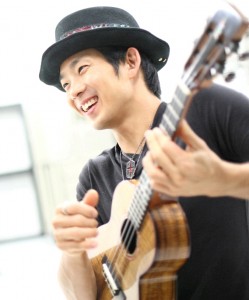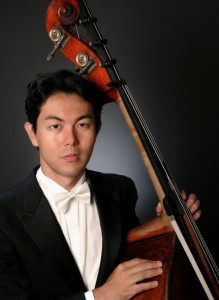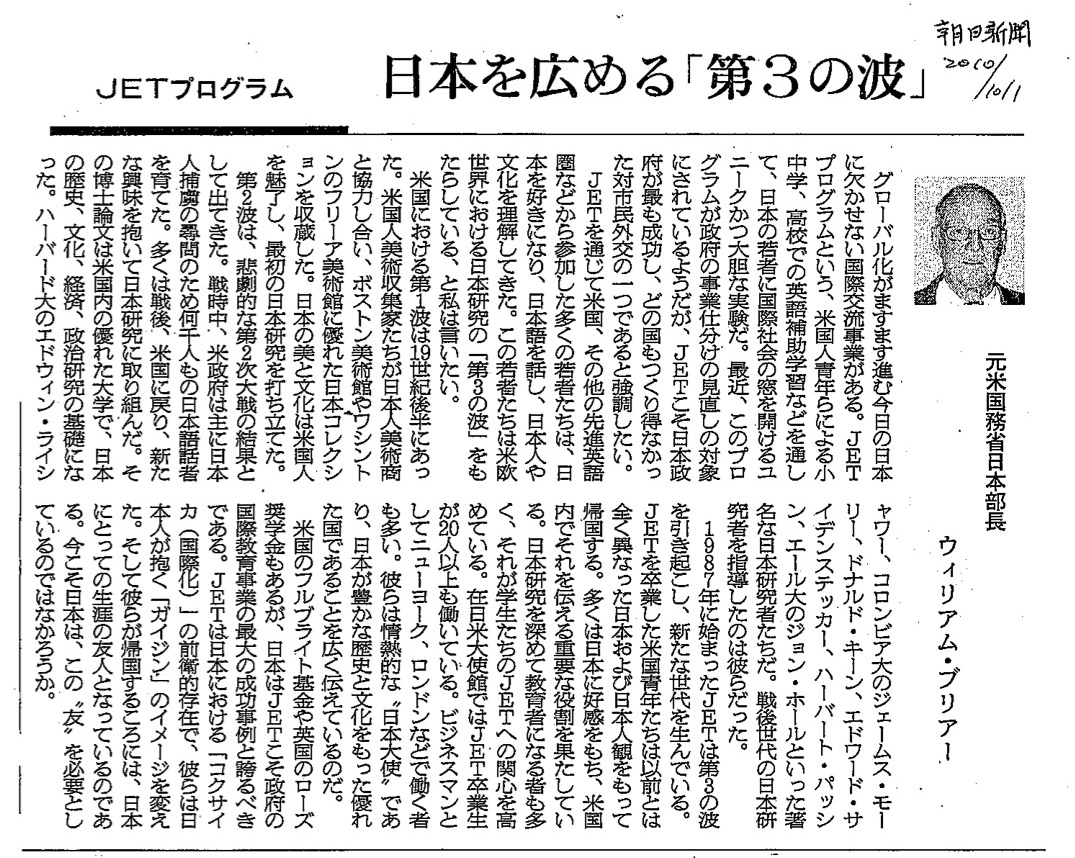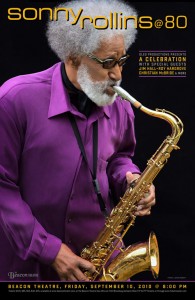JET ROI: NY’s Consulate-General of Japan, JET alumni make mighty combo
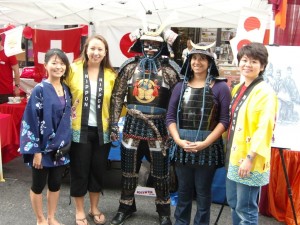
- Kumi Matsumoto, left, and Noriko Furuhata, right, from the consulate with JET alumni Monica Yuki and Shree Kurlerkar at the 92nd Street Y Street Festival. (Photo courtesy of Monica Yuki)
By JQ magazine’s Justin Tedaldi (CIR Kobe-shi, 2001-02) for Examiner.com. Visit his NY Japanese Culture page here to subscribe for free alerts on newly published stories.
For over two decades, the Consulate-General of Japan in New York has led the way in scouting, screening and sending young Americans to Japan for work opportunities under the government initiative known as the JET Program. But the consulate also plays an active role by working with the program’s returnees in the JET Alumni Association of America’s New York chapter (of which this writer is also a member) to continue advancing Japanese culture in America through numerous events and activities.
“I have been working on the JET Program as program coordinator for the past four years, and my most enjoyable moments doing this job have always related to JETAA NY,” said Noriko Furuhata of CGJ. “The wonderful members of JETAA NY give me their continued support on selection interviews, pre-departure orientations, recruiting and career forums, and more. I have always been very impressed with their enthusiasm promoting the JET Program and Japan-related events and activities.”
The members, whom Furuhata calls “true ambassadors for U.S.-Japan relations,” serve as good citizens and are keen to keep their connection to Japan strong while also doubling as a source to CGJ for alumni news. Steven Horowitz is JETAA NY’s professional outreach and development chair and a board member as well as the founder of JetWit.com, an online resource for the JET community.
“The consulate has been very instrumental in helping us communicate with the Japanese press,” he said. “Especially with regard to demonstrating the return on investment that JET and JETAA has and continues to provide to Japan. For the JETAA National Conference in New York this past August, they encouraged Japanese media to attend, which gave JET alumni chapter representatives a chance to share their views and experiences.”
Click here for the rest of the article.
By JQ magazine’s Justin Tedaldi (CIR Kobe-shi, 2001-02) for Examiner.com. Visit his NY Japanese Culture page here to subscribe for free alerts on newly published stories.
Fifth generation Japanese American Jake Shimabukuro has been recording music since the late ’90s. At age 33, he’s earned comparisons to Jimi Hendrix and Miles Davis on the ukulele, and will release his latest album, Peace Love Ukulele (Hitchhike) in January. After playing high-profile shows like the Asian American Music Festival in Los Angeles earlier this month for his national tour, the artist answered some questions prior to his upcoming gig at New York’s Highline Ballroom on Oct. 25.
Tell us about Peace Love Ukulele. Do you have a few favorite songs? Why?
Peace Love Ukulele is an album compiled of songs that I hope will bring joy and happiness to listeners near and far. I hope the emotions expressed in the music will connect people and make them realize that we all feel the same things—we just express them differently. I believe music is the greatest gift, and the ukulele is the friendliest way to present that gift to the world. A few favorite tunes on the album include “143,” a song inspired by the pager code 143, which simply means I love you; “Go For Broke,” a song written for the Japanese American veterans who served in World War II; and “Bohemian Rhapsody,” one of my all-time favorite classic rock tunes.
How does this album differ your last studio album?
The new CD, Peace Love Ukulele, is my first independent release. I had a lot of fun putting things together for this album. I really took my time with this one and tried to present the ukulele in ways that were fresh and exciting.
What do you hope people take away from your music?
I hope listeners experience the same joy that I’m experiencing when I’m strumming the ukulele. The ukulele is probably one of the easiest instruments to play. Anyone can pick it up for the first time, learn a couple chords and immediately start strumming songs. It’s so relaxing. I always tell people that playing the ukulele is like an entire yoga session in one strum.
Read the rest of the interview here.
Interview with Japanese indie rockers The Suzan
By JQ magazine’s Justin Tedaldi (CIR Kobe-shi, 2001-02) for Examiner.com. Visit his NY Japanese Culture page here to subscribe for free alerts on newly published stories.
The Suzan is a quartet of Japanese indie rock gals who call New York their home. Bounding between gigs in their native Tokyo and NYC, they’re now prepping a new album, Golden Week for the Poco Poco Beat. I caught up with the group (Saori, vocals and guitars; Rie, guitars and keyboards; Ikue, bass; NICO, drums) in advance of the band’s area shows this week for NickyDigital.com’s CMJ Showcase and Pitchfork.com’s #Offline Festival.
How did The Suzan form?
The Suzuki sisters, Rie and Saori, began making tracks in 2003. After they sent their demos to a Japanese indie label and that label released their songs, the owner of the label told them to organize the band to play shows. Then NICO and Ikue joined.
What does your name refer to?
It is the sisters’ nickname.
The band’s music is an eclectic mix of Western styles. Who are your biggest influences?
The Beatles and Wolfgang Amadeus Mozart.
Earlier this month we’ve had famous Japanese groups like X Japan, Vamps and Puffy AmiYumi playing New York. Did you and your friends get to see any of these shows? What are your feelings about the warm reception these artists have received in the States?
Ikue: Me and my friends didn’t see these shows. I think what they are doing is a good way to show Japan’s recent musical culture (Visuals, animation, etc.). Their ways to approach this are different from ours, though.
At the same time, it’s been difficult for any Asian band to achieve mainstream success here. What are The Suzan’s goals as a group?
NICO: I don’t believe THE SUZAN is an Asian band. We are a worldwide band that was just born in Asia.
Saori: I think it’s difficult to achieve mainstream success for Asian people. But we can do it! This is our goal.
Read the rest of the interview here.
Kaiju Big Battel to rumble at NY’s Royal Flush Festival
By JQ magazine’s Justin Tedaldi (CIR Kobe-shi, 2001-02) for Examiner.com. Visit his NY Japanese Culture page here to subscribe for free alerts on newly published stories.
There’s pro wrestling, and then there’s Japanese monster wrestling.
Kaiju Big Battel brings its unique brand of intergalactic smackdown to Warsaw Friday, Oct. 15 as part of Royal Flush magazine’s annual art, film and rock & roll festival, culminating in their Book 7 release party at Brooklyn’s premiere music venue.
Prepare for sheer drama in the ring and gut busting laughs when the heroic fighters of Kaiju take on the evil monsters of Dr. Cube’s posse in Kaiju Big Battel Presents: Save the Kaiju! This telethon style “fundraiser”—their only New York performance of 2010—promises to demolish at least one city and wipe out some extraterrestrial trash on the side, all for a good cause.
Such epic entertainment fits the Royal Flush Festival perfectly. Running through Oct. 18, showcases included a signing from fellow horror and monster movie auteur Rob Zombie at New York’s Forbidden Planet and a diverse lineup of films and concerts at Highline Ballroom and Knitting Factory.
Read the rest of the article here.
Interview with Satoshi Okamoto of the New York Philharmonic
By JQ magazine’s Justin Tedaldi (CIR Kobe-shi, 2001-02) for Examiner.com. Visit his NY Japanese Culture page here to subscribe for free alerts on newly published stories.
Japanese native Satoshi Okamoto is a double bass player for the New York Philharmonic, a position he has held there since 2003. Prior to that, he was a member of New York City Ballet Orchestra for one year and an assistant principal of the San Antonio Symphony for eight years. Last September, he performed at the New York Philharmonic’s Opening Gala Celebration for its169th season with Music Director Alan Gilbert and Wynton Marsalis’s Jazz at Lincoln Center Orchestra for the U.S. premiere of the latter’s Swing Symphony. I caught up with Okamoto following the performance to learn more about what it’s like to play with an esteemed ensemble.
What were your impressions of this year’s Opening Gala, and what was your favorite thing about it?
I thought it was very successful. The orchestra played very solidly. It was quite a high quality performance. Mr. Marsalis’s music was really nice, too. I always wish for more contemporary composers to use existing rhythm patterns to write music, like the Baroque era. In his piece, there were a lot of those: Charleston, Kanasas City swing, New Orleans parade marches, bebop, and so on. The orchestra was nicely woven into a jazz style music. If I can wish more, it would be nicer and more creative if there are more classical elements in the piece, because it’s a little like big band music played by an orchestra.
What’s it like working with musical director Alan Gilbert and Wynton Marsalis?
I know Alan from my school days in Juilliard. He was conducting the pre-college symphony where I was a ringer (helper). I always have a great time playing under his baton. For me, it comes very natural to synchronize with his music, I would say, more than any other conductor. I don’t really know Mr. Marsalis.
As a musician, what’s the difference between working with an orchestra in Japan compared with New York?
I have never been a regular member of Japanese orchestras, so maybe it’s not totally fair for me to make a comparison. But I think New York has more of an advantage to attract great musicians worldwide. Like the NBA or MLB, you often have to reach outside of your country to grab the best players. Even though Japanese orchestras are becoming international, it’s still harder for them to get the first class players from overseas compared to the New York Philharmonic, which is in a great position to attract the best players around the world. As a result, I’m surrounded by truly amazing musicians and you can’t have this kind of experience except only a few places in the world. I am enjoying it and really appreciate it.
Read the rest of the interview here.
Justin’s Japan: Interview with Yoshiki of X Japan
By JQ magazine’s Justin Tedaldi (CIR Kobe-shi, 2001-02) for Examiner.com. Visit his NY Japanese Culture page here to subscribe for free alerts on newly published stories.
After 25 years of recording and 30 million discs sold, the biggest rock group in Japanese history is finally come coming to New York. X Japan, the pioneers of the elaborate “visual kei” movement, launched themselves with a glam-meets-metal look and sound that instantly set them apart from the pack. After selling out the 55,000-seat Tokyo Dome a record 18 times in its career, X Japan will take Roseland Ballroom Sunday. Band leader/drummer/pianist Yoshiki shared his thoughts with me on breaking America and recording a new album.
For your current North American tour, what are you looking forward to doing in New York and the other cities in the U.S. and Canada?
Do the best X Japan shows EVER. (Love)
Your forthcoming album is going to be almost entirely recorded in English. Since many popular musicians have experienced plummeting CD sales, what are the goals with the new record?
Quality and quantity secondary!
Who is your label in the States? How did you choose them?
We are in the middle of closing the deal. If we come to an agreement, we may be able to announce the label and distributor at the New York show.
Read the rest of the interview here. Click the button below to visit X Japan’s U.S. homepage.
Asahi newspaper column offers perspective on the value of JET Programme to Japan
The following is a synopsis/loose translation of Bill Breer’s recent op-ed piece about the importance of the JET Programme to Japan which appeared in the My Viewpoint column of the Asahi newspaper from October 1, 2010. Breer is the former Japan Chair at the Center for Strategic & International Studies.
I thought it was worth sharing with the JET alum community as it provides some rather helpful perspective on the value to Japan of the JET Programme and the JET Alumni Association.
In this world of ongoing globalization, the JET Program is a daring, unique effort to open up the world to students in Japan. It is the Japanese government’s most successful program, and no other country has been able to create a citizens’ exchange initiative like it.
The many young people who have participated in the Program from the world’s leading English-speaking countries have come to like Japan, have learned the language, come to know the people and culture, and have gone on to become the “Third Wave” of Japanese scholarship.
The “First Wave” developed from the mid-19th century as art collectors worked with Japanese artists and merchants to build the great collections at the Boston Museum of Art, the Freer Galleries in Washington, DC, and others, entrancing Americans with Japan’s beauty and culture and producing the first research on Japan.
The “Second Wave” came out of the tragedy of the Second World War, as the US government trained thousands of soldiers in Japanese language for the war effort. These people came home with a deep interest in Japan and created the base of scholarship into Japan’s history, culture, economics and politics at the great universities. These men include Edwin Reischauer at Harvard, James Morley, Donald Keene, Edward Seidensticker and Herbert Passin at Columbia, and John Hall at Yale.
Now, the JET Program, begun in 1987, has given birth to a new generation. These people have an entirely different perspective on Japan and the Japanese people. Many of them have a fondness for Japan and are instrumental in conveying that to people in their home countries. Furthermore, many have gone on to become educators conducting further research on Japan, and this piques their students’ interest in JET. Over 20 ex-JETs work at the US Embassy in Tokyo, and many more work in business in New York, London, and other major cities. They are all passionate “Japanese ambassadors”, conveying the message that Japan is an outstanding country with a rich history and culture.
America has the Fulbright Program and England the Rhodes Scholarships, but Japan should be proud of its JET Program as the most successful example of a government youth exchange program. JET is the advance guard of Japan’s “internationalization”, whose participants have changed the Japanese people’s perceptions of “gaijin” and then gone home to become lifelong friends of Japan.
Japan could still use “friends” like these, couldn’t it?
Here is the original column:
Interview with ‘Assholes Finish First’ author Tucker Max
By JQ magazine’s Justin Tedaldi (CIR Kobe-shi, 2001-02) for Examiner.com. Visit his NY Japanese Culture page here to subscribe for free alerts on newly published stories.
In 2006, Duke Law School grad Tucker Max published I Hope They Serve Beer in Hell, a real life roundup of his drunken, sexual misadventures that unexpectedly shot him to the top of the New York Times Best Seller list and cemented him as the leader of the “fratire” (male chick lit) literary genre.
Following last year’s release of the film version of IHTSBIH, Max is back with a new digest of debauchery, Assholes Finish First. The book’s launch this week kicked off a coast to coast 34-date signing tour, and I spoke with the controversially hilarious author about his interest in Japan and future plans.
What kinds of things do you enjoy about Japanese culture?
Well, obviously, I love Japanese food. My favorite TV show of all time, without exception, is Iron Chef. Not the stupid American version; Iron Chef Japanese, like, the real one; the one that was on in Japan…my DVR for years was set to record almost every single Iron Chef episode. I can talk to you about Battle Porcini, when [Chef Masaharu] Morimoto did the porcini crème brûlée…the original Iron Chef is, quite literally, along with The Wire, my favorite TV show of all time.
Have you ever been to any of Morimoto’s restaurants?
I actually know Morimoto pretty well. Like, in a total weird coincidence, his restaurant in Philadelphia, Morimoto’s…the GM of that place for a couple of years was my buddy Paul Ardaji. So Paul knew that I loved Iron Chef Japan; he brought me in one night [with] Morimoto and we had dinner. And Morimoto, for whatever weird reason, like, we kind of hit it off and became friends. And Morimoto actually did a charity event with me in New York.
And this is a true story…this [is] actually going into my third book; it’s not in the second book. But Morimoto and I—it was basically like we were supposed to be, like, celebrity bartenders, and so of course everyone wanted us to mix, like, cool shots and stuff…so we did it like Iron Chef. He would have them pick an ingredient so people would bring, like, nacho chips over from the kitchen, and then he would make a shot with nacho chips that was, like, amazing…we got fu*kin’ plowed. Anyway, long story short, one guy over there got belligerently drunk, and he got into kind of like into a scuffle with one of the bartenders who worked there, and ended up getting me and him kicked out of my own charity event…I could not have been, like, more happy that I got kicked out of something with Iron Chef Japan when I’m not Japanese; it was the best.
Read the rest of the interview here.
Tom Baker covers the 2010 Tokyo Game Show
Tom Baker (Chiba-ken, 1989-91) is a staff writer for The Daily Yomiuri. As another example of JET ROI, he is one of at least four former JETS to have been on the newspaper’s staff in recent years. He usually writes for DYWeekend, the arts and leisure section. You can follow Tom’s blog at tokyotombaker.wordpress.com.
Earlier this month he covered the Tokyo Game Show, Japan’s biggest video game industry trade show. His story focused on new motion-sensing control systems from Sony and Microsoft, and also on innovative games by indie creators such as Minori Yokota (shown in the photo). Here is an excerpt:
Some of the freshest and most radically creative offerings at this year’s Tokyo Game Show were part of the Sense of Wonder night, a showcase for innovative indie games from Japan and overseas.
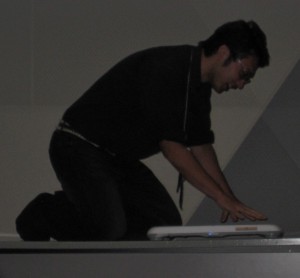 Minori Yokota, a graduate student at Kanagawa Institute of Technology, declared that he “hates” dating simulation games, which surprised the audience who watched him demonstrate a game called Love Press++: Massage for Your Truelove that he developed together with Prof. Akihiro Shirai and fellow student Taisuke Yamashita.
Minori Yokota, a graduate student at Kanagawa Institute of Technology, declared that he “hates” dating simulation games, which surprised the audience who watched him demonstrate a game called Love Press++: Massage for Your Truelove that he developed together with Prof. Akihiro Shirai and fellow student Taisuke Yamashita.
The game uses a Wii balance board to represent the torso of an imaginary woman, whom the player massages. As Yokota pressed and kneaded, a recording of a voice actress sighed, squealed and cooed–until he rubbed her the wrong way, when she scolded him for his clumsiness.
Humor of a blacker sort was seen in Ulitsa Dimitrova, a German cartoon simulation of the life of a homeless child, while MusicMineSweeper is a whimsical Japanese game that makes music based on the semirandom patterns players create in the popular Minesweeper game.
Players of Record Tripping, by American creators John and Dan Bell, use the scroll wheel of a computer mouse to scratch a record, deejay-style. Then, the same motion is used to contol the rotation of other round objects, such as a windmill, a clock face and safe’s combination dial, with each phase of the game having a different objective.
The youngest presenter was 17-year-old Mahdi Bahrami from Iran, whose elegant Everything Can Draw! uses lines to trace the paths of moving objects. He said he was inspired to create it in geometry class.
Such games might seem to offer hope in a sequel-swamped gaming world, but when a member of the audience asked Bahrami if he intended to pursue a career in video games, the whiz kid gave a one-word answer: “No.”
Read the full article here.
WIT Life #126: Dominance of video games and shared waters
***********************************************************************************
WITLife is a periodic series written by professional Writer/Interpreter/Translator Stacy Smith (Kumamoto-ken CIR, 2000-03). She starts her day by watching Fujisankei’s newscast in Japanese, and here she shares some of the interesting tidbits and trends together with her own observations.
Today’s NYT has two articles about Japan’s technology and relations with China. In the former, Hiroko Tabuchi discusses how the country’s once dominance of video games has been overtaken by Western game developer advances. The one exception is Nintendo, who has found great success with its Wii, but other companies are struggling in terms of economic resources and cultural understanding of what appeals to the international market (There is a growing gap in game styles between Japan and the West). Interestingly enough, in order to appeal to a global audience some video games are being written in scratch in English as opposed to relying on awkward translations from the original Japanese. The questions remains as to whether Japan can still produce star characters who can become the next Mario or Sonic.
On the political side, the second article talks about a dispute between Read More
Interview with JET alumna/’Food Sake Tokyo’ author Yukari Sakamoto
 By JQ magazine’s Justin Tedaldi (CIR Kobe-shi, 2001-02) for Examiner.com. Visit his NY Japanese Culture page here to subscribe for free alerts on newly published stories.
By JQ magazine’s Justin Tedaldi (CIR Kobe-shi, 2001-02) for Examiner.com. Visit his NY Japanese Culture page here to subscribe for free alerts on newly published stories.
Tokyo-born and American-raised JET alumna Yukari Sakamoto (Chiba-ken, 1989-1990) is a professional chef, sommelier, and writer who has spent much of her life in both the U.S. and Japan. Released earlier this year, her debut book Food Sake Tokyo is the ideal guide for indulging in the best of Tokyo dining and drinking, whether you’re a first-time visitor or a Japanophile foodie keen on discovering new favorites.
How were you approached to write this book as part of the Terroir Guides series?
I contribute to Food & Wine magazine and my travel editor there at the time, Salma Abdelnour, told me about the publisher The Little Bookroom. She praised their travel guides and thought my book would find a good home there. My agent, Lisa Ekus, sent my proposal to The Little Bookroom, and the publisher, Angela Hederman, embraced it immediately. The Little Bookroom has a series of foodie travel guides called the Terroir Guides, and my book was a perfect fit—like Cinderella’s glass slipper. I have heard how difficult it is to find a publisher who will accept a book proposal, and I am blessed to have found the perfect home.
In the introduction to your book, you write that the popularity of the Slow Food movement has created a renewed appreciation for kyodo ryori, or local foods. How long has this movement been going on, and what started it?
The Slow Food movement has been popular for a long time. What has been extremely popular in the last few years are “antenna shops.” These regional shops represent prefectures from around Japan that feature local produce, beverages, and foods. For example, the Okinawa Washita shop in Ginza has a basement filled with awamori (the local shochu), including rare brands hard to find outside of Okinawa. The first floor has tropical fruits and vegetables and local specialties like shimadofu, a dense tofu, and shikuwasa, a citrus juice. I cannot say for sure what started it, but there are several contributing factors. Food safety scares and mislabeling of imported product have encouraged more consumption of local products. Popular food and travel programs promote regional specialties. And, there are an increasing number of ambassadors, like the governor of Miyazaki [Prefecture], Hideo Higashikokubaru, who enthusiastically promote Miyazaki products like wagyu, mangoes, etc. I am always impressed at the number of customers at antenna shops. I often go out my way to shop at antenna shops to pick up rare shochu, hard to find miso, or pickles.
There are more than 100,000 restaurants in Tokyo. How did you pare it down to the ones listed in the book?
First of all, I focused on restaurants that represented a particular cuisine. And then I narrowed down the list based on geography, leaning toward easy to find restaurants, or those included in one of the areas covered by the book. I have lived in Tokyo for eight years and ate out a lot while there. Tokyo is a great dining city, especially for solo diners.
Read the complete interview here.
WITLife is a periodic series written by professional Writer/Interpreter/Translator Stacy Smith (Kumamoto-ken CIR, 2000-03). She starts her day by watching Fujisankei’s newscast in Japanese, and here she shares some of the interesting tidbits and trends together with her own observations.
Today’s NYT has a flurry of articles about Japan’s politics and economy. First of all, PM Kan survived the challenge to his leadership and handily defeated Ozawa with 721 votes to his 491. Everyone can breath a collective sigh of relief knowing that the PM will not be changing yet again.
On the economic side, Hiroko Tabuchi gives us two articles about the strong yen and its implications. One discusses the measures the government has taken to weaken it, intervening in foreign markets for the first time since 2004. The other talks about how the strong yen has provided an opportunity for Japanese companies to go a shopping spree purchasing foreign companies, such as Rakuten’s recent acquisition of Buy.com. Happy reading!
Interview with jazz legend Sonny Rollins
By JQ Magazine’s Justin Tedaldi (CIR Kobe-shi, 2001-02) for Examiner.com. Visit his NY Japanese Culture page here to subscribe for free alerts on newly published stories.
Grammy-winning tenor saxophonist Sonny Rollins began his eighth decade of life Tuesday, and will celebrate with a headlining concert at New York’s Beacon Theatre on Sept. 10. I spoke with the man the New York Times recently called “indisputable jazz royalty” about his relationship with Japan and his inimitable philosophy of life.
What are your thoughts about turning 80?
Well, actually, I don’t think too much about it because I’m a pretty busy fellow. It just so happens that I looked at the calendar, and here I am, 80!
After the New York concert, you have three Japanese gigs in October: Sapporo, Tokyo, and Osaka. Can you describe your history with Japan?
Well, I’ve been going to Japan for many years now, I think—since 1963, maybe. And regularly, I go there…the first time I went to Japan, I was taken by the culture, and I was very much looking forward every time I would get a chance to go back. I used to spend a lot of time in these areas—temples, and examining the Zen Buddhist culture, and the various musical instruments that are indigenous to Japan. My wife and I were very fond of going to the Noh theater, and we used to go there every time we got a chance to when we were in Japan. I really love the culture; I love the Buddhist culture, and that’s old Japan.
So, that’s what I always looked for; sought out; yearned for that; when I was away from Japan. It was always, “Yeah, I wish I could get back and smell the country,” you know? The bamboo forests, the sound of the shakuhachi [Japanese flute], and the very peaceful places. The last time I was there—I was there on vacation recently—and I was at Kamakura, it’s among the places that are really so beautifully serene and peaceful. So I really enjoyed that. Of course, I’ve been to Kyoto many, many times, and Nara, and many other parts of the country.
So, I love Japan. As I said, the first time I went there, I got a feeling of great—when I got off the plane, I just felt happy for some reason. And I felt as if I was rediscovering some place that I’d been to in a previous life or something. And I still maintain those feelings about Japan today.
Was there any hesitation about going there the first time regarding American sentiments after the war? Did you have any impressions that were turned around based on the reception you received?
As you know, music is universal…jazz music is a peaceful force, and it’s received all over the world, and people in Japan are very interested in jazz music. They’re really knowledgeable about the music; they’re very interested in the people that play it, and they love it.
Read the complete interview here.
JQ Magazine’s September/October “Sayonara Print Issue” Out Now!
JQ magazine returns with another fall classic! Features include the JETAA USA National Conference wrap-up, a review of JET alum author Malena Watrous‘ new book If You Follow Me, and an exclusive interview with Japan’s Ambassador to the United States Ichiro Fujisaki. Click here to view.
BIG NEWS! This is also JQ‘s final issue in traditional print form. It will return after a brief hiatus as an all-online publication. With no space limitations or monthly deadlines, JET readers from all chapters are encouraged to submit stories, announcements, updates and commentary to help make us a stronger and more unified “national international” publication.
Additional contents below. Thanks to JQ Editor Justin Tedaldi (Kobe-shi CIR, 2001-02) for another sugoi issue. Contact Justin if you’d like to pitch or write a story for future editions.
CONTENTS
- Page 3……..From the Editor, Ambassador of Japan to the United States
- Page 4……..Nippon News Blotter / JETAANY’s Secretary Ties the Knot
- Page 5……..JETAANY Society Page – National Conference Wrap-up by Goshippu Garu
- Page 7……..Ambassador Ichiro Fujisaki: The JQ Interview by Justin Tedaldi
- Page 8……..JoAnn M. Hunter Goes from Broadway to Tokyo by Lyle Sylvander
- Page 9……..Through the Eastern Looking-Glass with Malena Watrous by Sharona Moskowitz
- Page 10……JETlog featuring Stuart Wallace
- Page 11…….Book Corner: Just Enough by David Kowalsky
- Page 11…….Life After the B.O.E. by David Namisato
WIT Life #120: Domestic challenges
WITLife is a periodic series written by professional Writer/Interpreter/Translator Stacy Smith (Kumamoto-ken CIR, 2000-03). She starts her day by watching Fujisankei’s newscast in Japanese, and here she shares some of the interesting tidbits and trends together with her own observations.
Yesterday’s NYT had an article about the rise of Japan’s very own Tea Party. It profiles the rise of the Zaitokukai, or the Citizens Group That Will Not Forgive Special Privileges for Koreans in Japan. In comparison to old-line rightist groups this movement is known as the Net right, as they are organized via the Internet and come together for demonstrations. The article focused on their protest last December at an elementary school for ethnic Koreans. This year they also picketed theaters showing the documentary The Cove, which they perceive to be anti-Japanese. The group is led by a 38-year old man who insists that foreigners have caused Japan to go in the wrong direction (members even harassed some Westerners for wearing Halloween costumes!). The far right writes them off as amateur attention seekers, but nevertheless this is a disturbing trend.
In WSJ coverage this morning, there is discussion of how a majority of Read More

